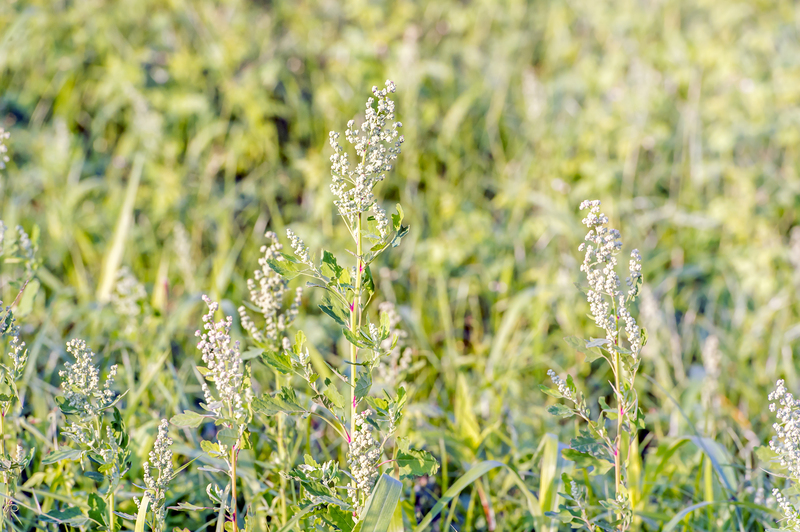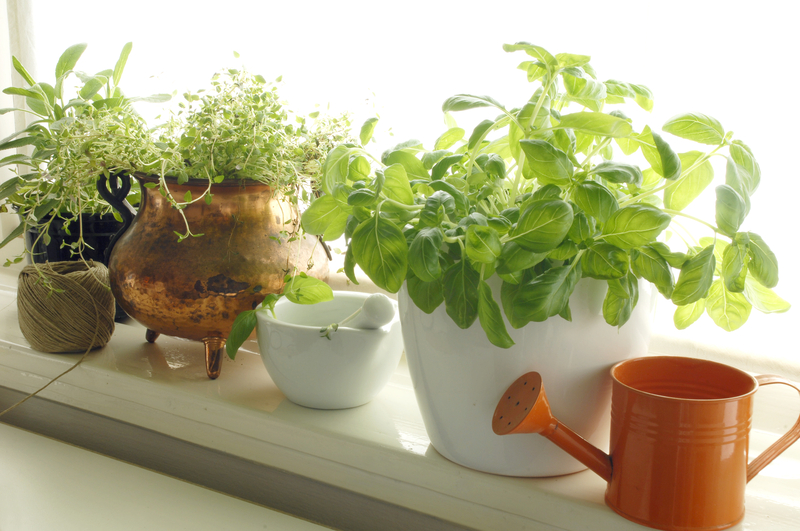Essential Strategies for a Flourishing Herb Garden
Posted on 05/06/2025
Essential Strategies for a Flourishing Herb Garden
Are you dreaming of a lush, aromatic, and thriving herb garden just steps outside your kitchen? Whether you're a beginner or a seasoned green thumb, mastering the right strategies can transform your herb patch into a perpetual source of flavor, fragrance, and beauty. This comprehensive guide outlines the essential techniques, practical tips, and expert methods for cultivating a flourishing herb garden all year round.

Why Grow Your Own Herbs?
Growing fresh herbs at home is immensely rewarding. Not only do you have instant access to culinary staples like parsley, basil, and thyme, but you also benefit from their health properties, vibrant foliage, and the joy of gardening itself. A bountiful herb garden also:
- Enhances home-cooked dishes with fresh, organic flavors
- Provides natural remedies and teas
- Offers visual appeal with varying textures and colors
- Attracts pollinators, improving your overall garden health
- Reduces grocery costs for expensive fresh herbs
Choosing the Right Location for Your Herb Patch
Location is critical for a productive herb garden. Most herbs require plenty of sunlight, good drainage, and protection from harsh winds. Keep these factors in mind when selecting a site:
- Sunlight: Herbs like at least 6-8 hours of direct sun daily. South-facing spots are ideal.
- Drainage: Avoid low areas that puddle. If necessary, use raised beds or containers.
- Accessibility: Place your garden close to your kitchen to encourage regular harvesting.
- Protection: Use fences, windbreaks, or companion plants to shield delicate herbs from strong winds and heavy rain.
Pro Tip: Many herb gardeners grow pots of herbs on windowsills or balconies if outdoor space is limited.
Selecting the Best Herbs for Your Garden
To ensure your herb garden thrives, choose varieties that suit your local climate, space, and culinary preferences. Here are some popular and easy-to-grow options:
- Basil: Thrives in warm weather; perfect for Italian dishes.
- Parsley: Hardy, nutritious, and great for garnishing.
- Mint: Vigorous and versatile; best grown in containers to prevent spreading.
- Rosemary: Evergreen and drought-tolerant; ideal for Mediterranean cuisine.
- Thyme: Compact, fragrant, and a perennial staple.
- Chives: Hardy and quick-growing with a mild onion flavor.
- Coriander (Cilantro): Best in cooler seasons for salsas and curries.
- Sage: Hardy, aromatic, and essential for winter seasonings.
Grouping Herbs by Growing Conditions
Organize your herbs by their sunlight, water, and soil preferences for optimum results:
- Sun-Loving Mediterrean Herbs: Rosemary, thyme, oregano, sage
- Moisture Lovers: Parsley, basil, cilantro, chervil
- Shade-Tolerant Choices: Mint, lemon balm, chives
Preparing the Soil for Your Herb Garden
The foundation of a vibrant herb bed is rich, well-draining soil. Follow these steps to ensure the perfect environment for healthy herbs:
- Test the Soil: Perform a soil pH test. Most herbs thrive in slightly acidic to neutral soil (pH 6.0-7.5).
- Enrich with Organic Matter: Mix in compost, well-rotted manure, or leaf mold to add nutrients and improve soil structure.
- Ensure Drainage: If the soil is heavy clay or prone to waterlogging, raise your beds or incorporate sand and organic matter.
- Mulch: After planting, add a layer of organic mulch (straw, bark, or compost) to conserve moisture, suppress weeds, and protect roots.
Note: Container gardens benefit from high-quality potting mix with added perlite or sand.
Smart Planting Techniques for a Thriving Herb Garden
Planting herbs the right way ensures strong root development and abundant growth. Keep these techniques in mind:
-
Stagger Planting Times:
- Sow fast-growing annuals like basil, cilantro, and parsley in stages for continuous harvests.
- Perennials such as thyme, chives, and rosemary can be started from cuttings or transplants in early spring.
- Space Wisely: Don't crowd your herbs — most need good air circulation to avoid disease.
- Label Each Herb: Use waterproof markers or decorative tags to identify plants, especially at the seedling stage.
- Water Carefully: Keep the soil consistently moist but not soggy, especially for young seedlings.
Starting Herbs from Seed vs. Transplants
- Seed: Offers more variety and is cost-effective, but takes longer to harvest.
- Transplants: Provide a head start, available at nurseries for popular herbs.
Watering and Feeding Your Herbs for Peak Growth
A successful herb garden depends on proper watering and nutrition.
-
Watering Tips:
- Water thoroughly but allow the soil to dry between sessions.
- Morning watering minimizes fungal problems.
- Container herbs may need more frequent watering.
-
Feeding:
- Use balanced organic fertilizers or liquid feeds.
- Heavy feeders such as basil appreciate regular monthly feeding.
- Avoid over-fertilizing, since too much nitrogen can reduce flavor.
Insider's Tip: Herbs grown for fragrance and culinary use develop stronger flavors in modestly fertile soil.
Effective Pruning and Harvesting Techniques
Regular pruning is vital for a prosperous herb patch. Here's how to keep your herbs bushy, healthy, and productive:
- Pinch back tips of basil, mint, and oregano to encourage branching.
- Harvest leaves in the morning when oil content is highest.
- Avoid removing more than a third of the plant at one time.
- Remove flower buds from annuals like basil regularly to prevent bolting and prolong leaf harvest.
- Cut perennial woody herbs (e.g., rosemary, sage) by up to one-third in early spring to stimulate growth.
Pest and Disease Management in Herb Gardens
Herbs are generally resistant to pests and diseases, but a few proactive steps will help keep problems at bay:
- Inspect regularly for common pests such as aphids and spider mites.
- Encourage beneficial insects by growing flowers like calendula and nasturtiums nearby.
- Water at the base to keep leaves dry and reduce fungal infections.
- Remove diseased foliage promptly.
- Use organic treatments like neem oil or soap spray if infestations occur.
Companion Planting: Many herbs, such as basil and chives, naturally repel garden pests when grown alongside vegetables.
Overwintering and Year-Round Herb Care
To keep your herb garden flourishing throughout the seasons:
- Protect tender perennial herbs by mulching well before the first frost.
- Bring containerized herbs indoors or into a sheltered area for winter.
- Grow hardy herbs such as thyme, sage, and rosemary in-ground for winter resilience.
- Continue harvesting sparingly during the colder months to promote regrowth in spring.
Creative Herb Garden Ideas for Limited Spaces
No yard? No problem. You can still cultivate an abundance of herbs with these creative approaches:
- Vertical herb gardens: Use wall-mounted planters or hanging pockets.
- Windowsill pots: Ideal for basil, cilantro, parsley, and chives.
- Tiered plant stands: Maximize sunlight on patios and balconies.
- Repurposed containers: Try teapots, mugs, or even old boots for quirky displays.
Design Inspiration:
Mix herbs with edible flowers, succulents, or create spiral herb beds for visual flair and greater planting area.

Conclusion: Transform Your Herb Garden Into a Flourishing Paradise
With the right strategies, your herb patch can become a robust, aromatic haven providing beauty, flavor, and health benefits each day. Remember to:
- Pick the right location and herbs for your space and climate
- Create rich, well-draining soil
- Plant, water, and feed thoughtfully
- Prune and harvest regularly for bushy, healthy plants
- Manage pests organically and adapt to seasonal changes
Start implementing these essential strategies today, and watch your herb garden prosper in every season! Share your successes and discoveries with friends and family, and enjoy the fresh, homegrown flavors that only a flourishing herb garden can provide.
Frequently Asked Questions About Growing a Healthy Herb Garden
- What is the easiest herb to grow for beginners?
Mint is one of the easiest herbs to grow and is highly resilient, but remember to keep it in a container to prevent spreading. - How often should I water my herbs?
Water when the top inch of soil feels dry. Overwatering can lead to root rot, especially for Mediterranean herbs like rosemary and thyme. - Can I grow herbs indoors year-round?
Yes! South or west-facing windows are best, or supplement with grow lights during darker months.
Let your herb garden adventure begin, and reap the rewards of fresh flavor and natural abundance every day!

